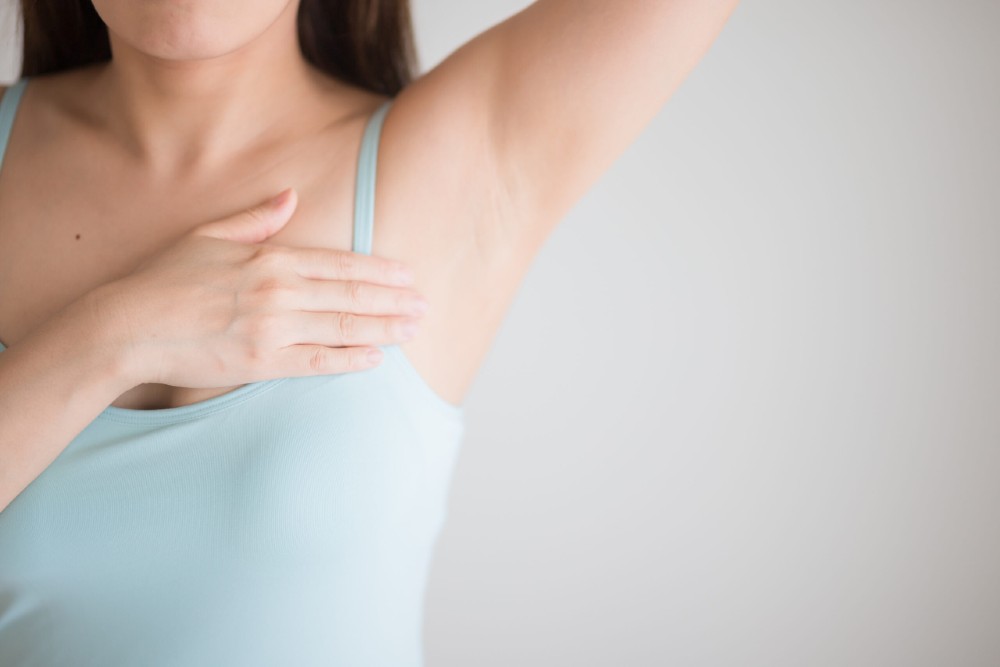
Nội dung bài viết / Table of Contents
This post is also available in: Tiếng Việt (Vietnamese)

Common types of benign breast lumps include:
Benign breast lumps are quite common. Please discuss with your doctor for further information.
The common symptoms of benign breast lumps are:
There may be some symptoms not listed above. If you have any concerns about a symptom, please consult your doctor.
If you notice any breast changes, you should call your doctor right away to get checked, but don’t panic. Most breast lumps are benign, which means they’re not cancerous.
The causes of fibroadenomas, breast cysts, and intraductal papillomas are unknown.
Fibrocystic changes may result from repeated stimulation by the female hormones estrogen and progesterone.
Please discuss with your doctor for further information.
The information provided is not a substitute for any medical advice. ALWAYS consult with your doctor for more information.
A breast examination is done. With the woman sitting or lying down, the doctor inspects the breasts for irregularities in shape, a nipple that turns inward (inverted nipple), and lumps. The doctor also checks for dimpling, thickening, redness, or tightening of the skin over the breast. The nipples are squeezed to check for a discharge. The armpits are checked for enlarged lymph nodes.
The doctor may examine the breast and armpits with the woman in different positions. For example, while sitting, she may be asked to press her palms together in front of the forehead. This position makes the chest muscles contract and makes subtle changes in the breast more noticeable.
The doctor may review the technique for breast self-examination with the woman during the examination. Techniques for the doctor’s examination and self-examination are similar.
Imaging tests are used to:
Mammography involves taking x-rays of both breasts to check for abnormalities. A low dose of radiation is used. Only about 10 to 15% of abnormalities detected by mammography result from cancer. Mammography is more accurate in older women because as women age, the amount of fatty tissue increases, and abnormal tissue is easier to distinguish from fatty tissue than other kinds of breast tissue.
Ultrasonography can provide more information about abnormalities detected by mammography. For example, ultrasonography can show whether a lump is solid or is filled with fluid (a cyst). Cysts are rarely cancerous. Ultrasonography can also be used to help doctors place a biopsy needle into the abnormal tissue.
Magnetic resonance imaging (MRI) is done at the same time as mammography to screen women if they have an increased risk of developing breast cancer—for example, if they have a mutation in the gene for breast cancer (the BRCA gene).
After breast cancer is diagnosed, MRI is used to identify abnormal lymph nodes and to determine the size and number of tumors. This information can help doctors plan surgery or other treatments.
Fibrocystic breast changes do not require treatment, but your doctor may recommend things to help relieve monthly tenderness.
Simple cysts can be treated through fine needle aspiration. You don’t need surgery to do this. A small needle is used to suck out some cells from the breast lump.
If the lump is a cyst, they can suck out the fluid and the cyst will collapse. Cysts can also go away on their own, so your doctor may choose to wait before trying to get rid of it.
Fibroadenomas and intraductal papillomas can be removed surgically.
It can be hard to tell if a lump from traumatic fat necrosis is that or something else until your doctor does a biopsy. These usually don’t need to be treated. But if the lump bothers you, it can be cut out.
See more post:
The following lifestyles and home remedies might help you cope with benign breast lumps:
If you have any questions, please consult with your doctor to better understand the best solution for you.
Sources: